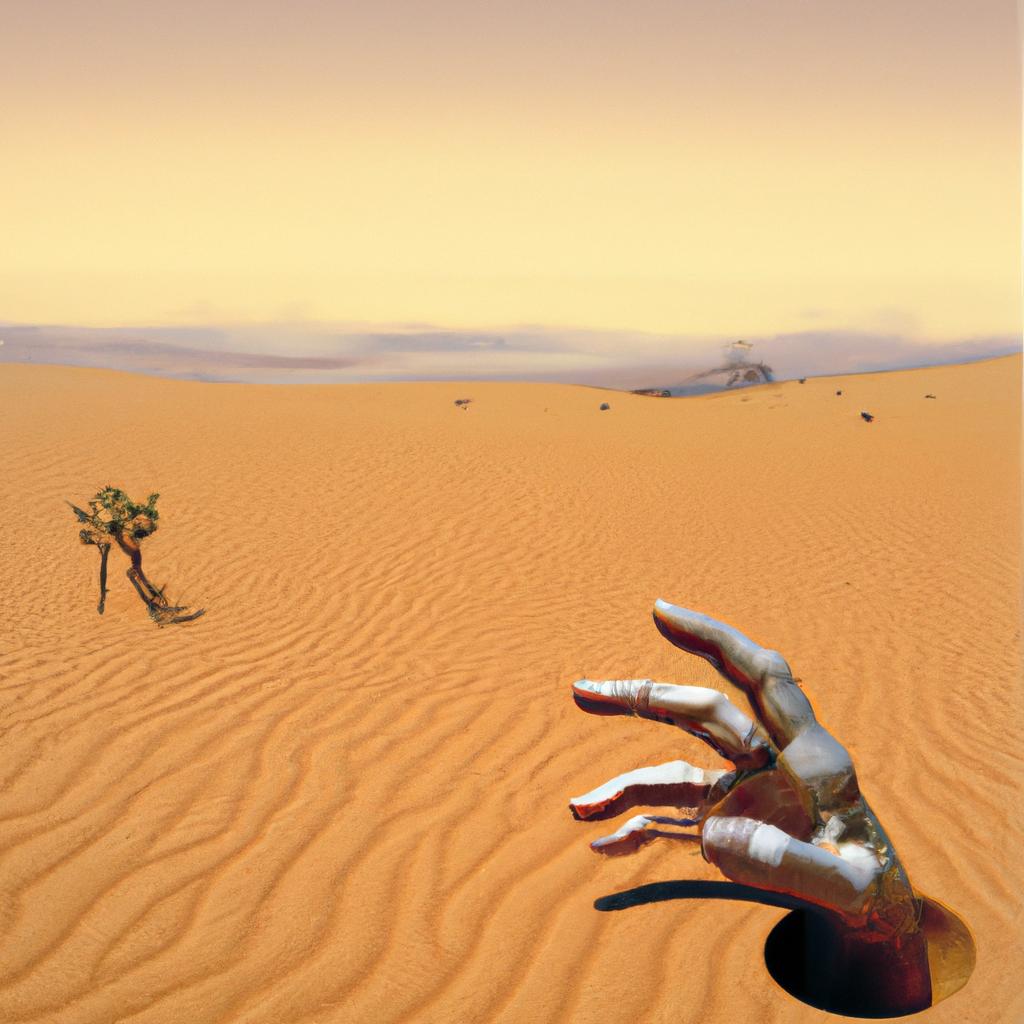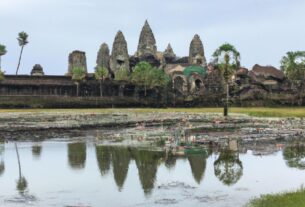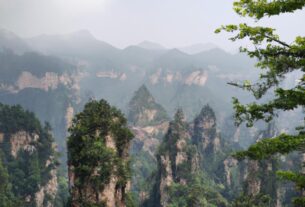Are you fascinated by the enigmatic wonders of the desert? If so, you’re probably already well-aware of the Hand in the Desert. This captivating sculpture, nestled in Chile’s Atacama Desert, has evolved into an iconic tourist attraction. In this article, we’ll delve into the history, significance, and cultural impact of the Hand in the Desert.
Decoding the Hand in the Desert
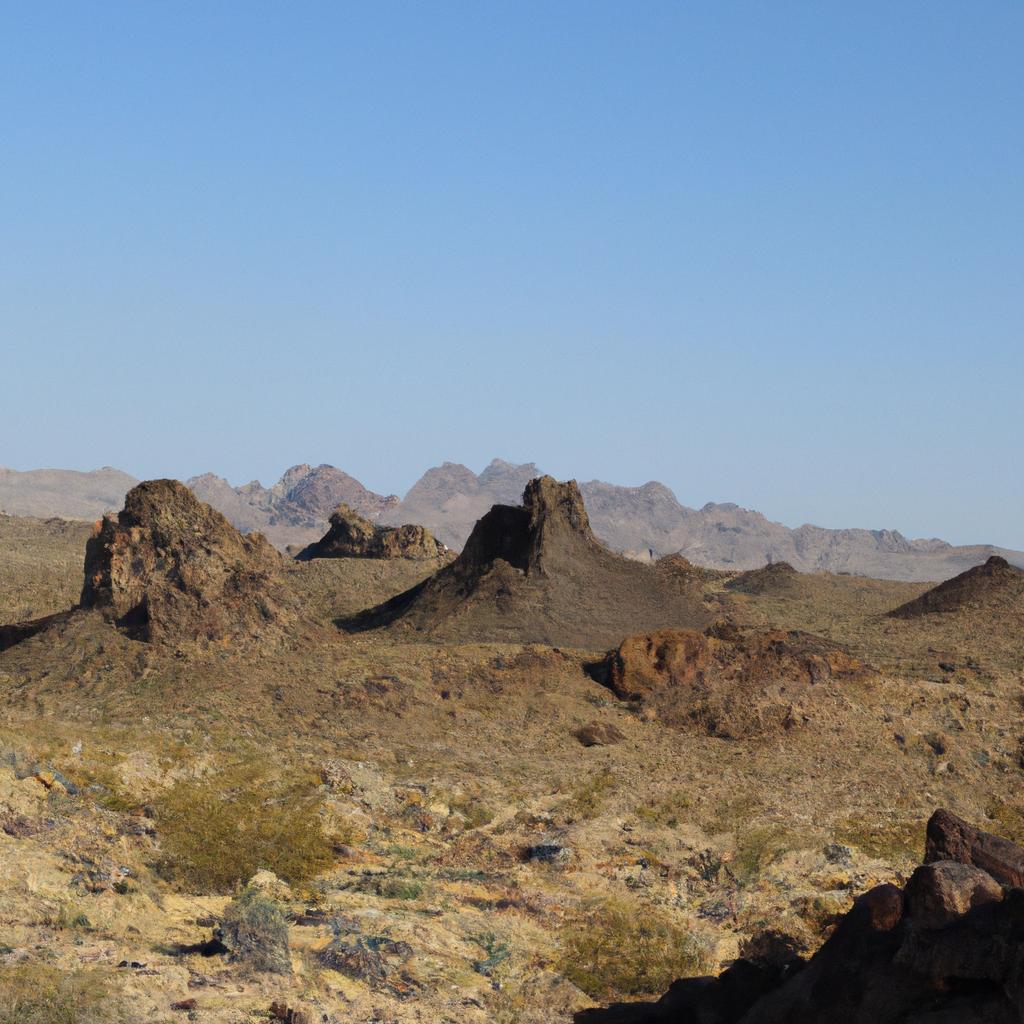
The Hand in the Desert is an extraordinary sculpture of a hand emerging from the sand. Made from concrete and towering 11 meters high, it is the brainchild of celebrated Chilean sculptor, Mario Irarrázabal. Known for his monumental works of art, Irarrázabal has left an indelible mark on the art world.
A Glimpse into the Hand’s Past
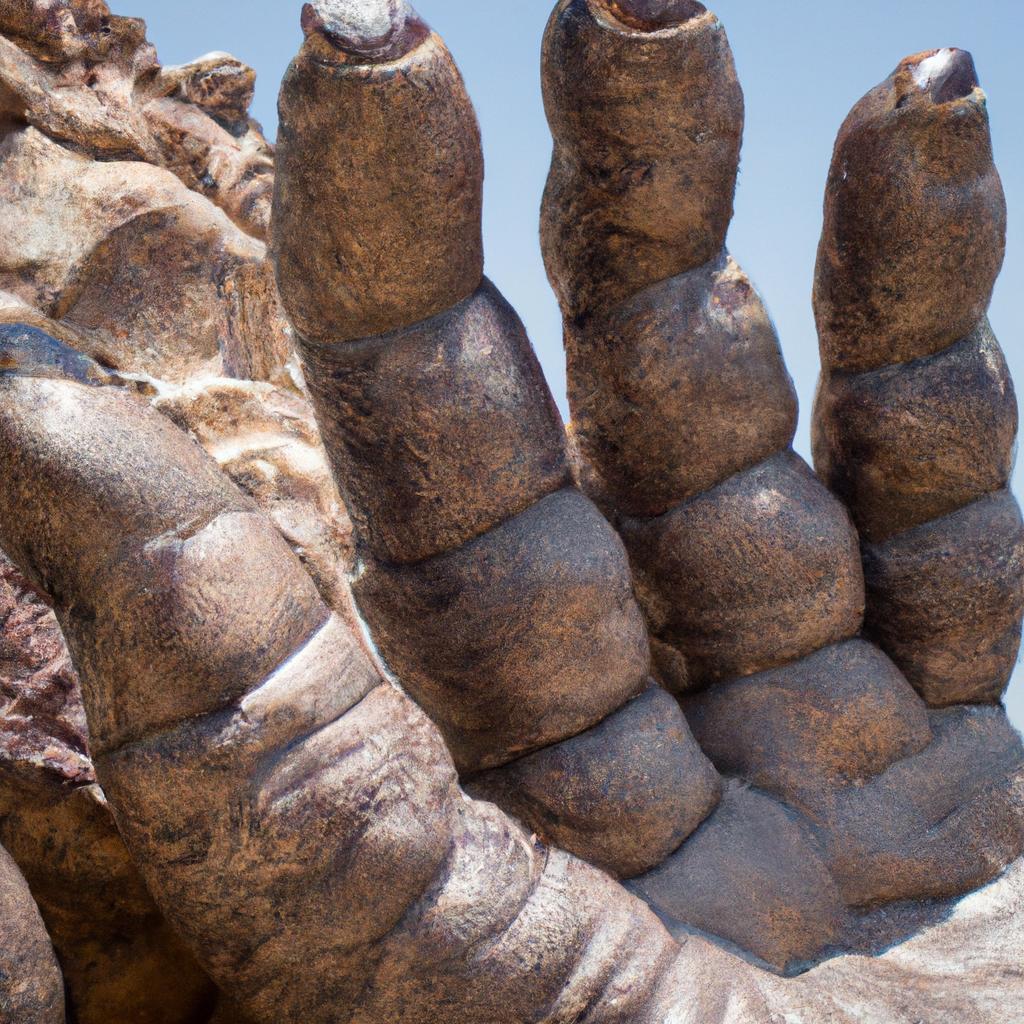
Created in 1992, the Hand in the Desert has since become an emblematic symbol of the Atacama Desert. Local business owners commissioned the sculpture to boost tourism in the area. Situated about 70 kilometers south of Antofagasta, the Hand’s remote location was strategically chosen to lure visitors to the region.
The Hand’s Significance as a Tourist Attraction
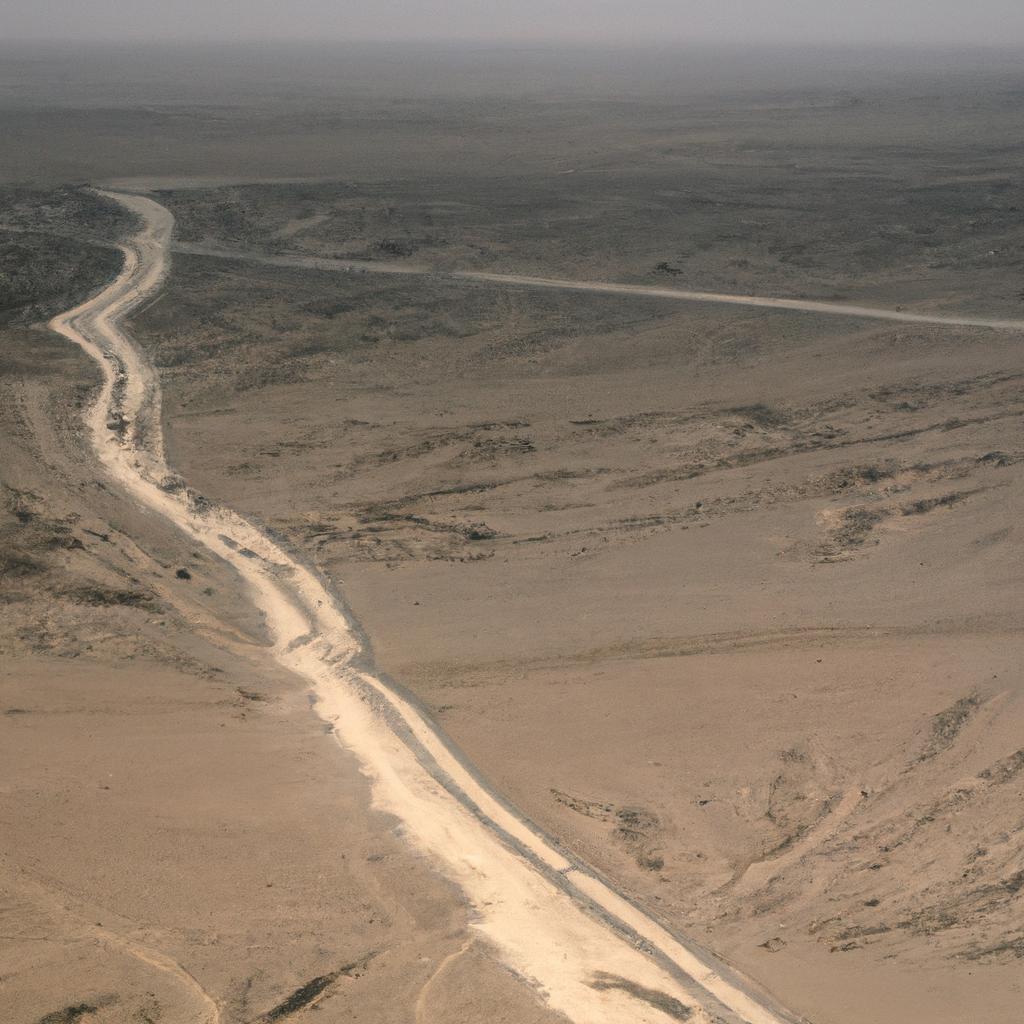
Drawing tourists from around the globe, the Hand in the Desert has grown into a beloved attraction. Its uniqueness and air of mystery captivate the imagination of all who behold it. The sculpture has even been featured in various films, music videos, and advertisements, elevating its popularity to new heights.
As we further explore the history and significance of the Hand in the Desert, we will uncover the legend that shrouds this captivating sculpture.
The Legend of the Hand in the Desert

Have you ever pondered the story behind the Hand in the Desert? Various versions of the legend exist, each imbued with a sense of mystery and allure.
Unearthing the Origin and History of the Legend
According to one version of the legend, the Hand in the Desert was once the actual hand of an ancient giant. Allegedly, the giant was buried in the desert, leaving his hand exposed above the sand. Over time, the hand transformed into stone and assumed the form we see today.
Conversely, another version posits that the Hand was crafted by extraterrestrial beings that visited Earth in the distant past. In this narrative, the aliens left the Hand as a message for generations to come.
Exploring Different Interpretations of the Legend
Multiple versions of the Hand in the Desert legend exist, each presenting its unique twist. Some legends depict the Hand as a symbol of hope and protection, while others warn of imminent danger.
One popular interpretation portrays the Hand as a symbol of love. According to this tale, a man, lost in the desert, sculpted the Hand as an expression of his love for his wife, hoping that she would find him and rescue him.
Deciphering the Significance and Meaning of the Hand in the Legend
Irrespective of the version, the Hand in the Desert holds immense importance and meaning for countless individuals. Many perceive it as a symbol of hope, resilience, and the indomitable human spirit. Others view it as a reminder of the enigmatic aspects of our universe.
More than merely a sculpture, the Hand in the Desert has evolved into a cultural icon, inspiring artists, writers, and filmmakers worldwide. Let us continue exploring the significance of the Hand, delving into its location and the profound impact it has had on the surrounding area.
Unveiling the Location of the Hand in the Desert
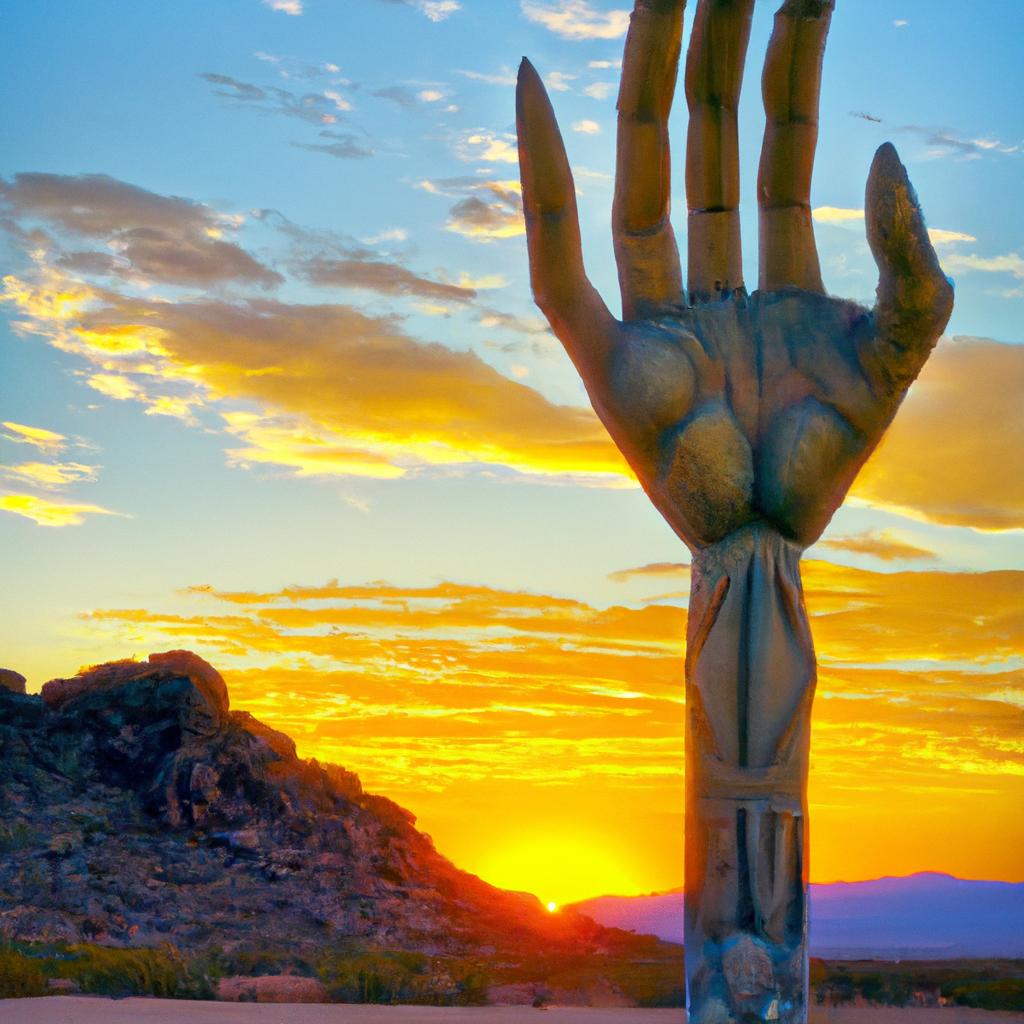
If you’re planning a visit to the Hand in the Desert, it’s imperative to know its exact location and how to reach it. Here’s everything you need to know about this elusive sculpture’s whereabouts.
Describing the Terrain and Landscape of the Location
Situated in the Atacama Desert, one of the driest places on Earth, the Hand in the Desert finds itself amidst a desolate landscape. Rocky hills and sand dunes stretch as far as the eye can see, creating a barren backdrop. The area surrounding the Hand also boasts a variety of cacti and desert plants, enhancing the location’s unique beauty.
Accessing the Hand and the Best Route
Reaching the Hand in the Desert can prove challenging, as it resides in an isolated area devoid of public transportation. The most convenient way to reach the sculpture is by car. You can either rent a vehicle or hire a local tour guide. The Hand is approximately 70 kilometers south of Antofagasta, and the journey takes roughly an hour.
Upon arrival, expect a 10-15 minute hike to reach the sculpture. The trail may not be well-marked, so pay close attention to the terrain and follow any signs or markers along the way.
Ensuring Safety and Taking Precautions during Your Visit
Exploring the Hand in the Desert can offer a unique and unforgettable experience. However, it’s crucial to prioritize safety. Considering the severity of the desert environment, bring an ample supply of water, sunscreen, and protective clothing. Exercise caution with each step, avoiding any hazardous areas or steep drops.
Furthermore, demonstrate respect for the Hand and the surrounding ecosystem. Avoid littering or causing harm to the area’s plants and wildlife. By adhering to these precautions, you’ll ensure a safe and enjoyable visit to the Hand in the Desert.
The Hand in the Desert as an Artistic Wonder
The Hand in the Desert transcends its role as a mere tourist attraction and emerges as a true artistic masterpiece. In this segment, we will delve into the artistic features and significance that make the Hand a mesmerizing work of art.
Unveiling the Artist behind the Hand’s Creation
Mario Irarrázabal, the Chilean sculptor responsible for the Hand in the Desert, is renowned for his exploration of the human condition through art. The Hand stands as one of his most iconic works, symbolizing the Atacama Desert’s essence.
Discovering the Inspiration behind the Hand’s Creation
Irarrázabal drew inspiration from the notion of a vulnerable human hand emerging from the earth. He sought to elicit emotions and provoke contemplation regarding the interconnectedness of humans and nature.
Appreciating the Artistic Features and Symbolism of the Hand
Constructed from concrete, the Hand in the Desert possesses a rough texture reminiscent of the desert’s natural rock formations. The juxtaposition of the hand’s smooth lines against the coarse concrete surface enhances its artistic allure.
Beyond its aesthetic appeal, the Hand embodies the human spirit’s resilience and vulnerability. It serves as a testament to humanity’s ability to survive and thrive even in the harshest environments. The Hand in the Desert will undoubtedly continue to inspire generations with its artistic significance.
The Hand in the Desert as a Cultural Emblem
The Hand in the Desert has transcended its status as a mere tourist attraction, becoming a profound cultural symbol of the Atacama Desert. In this section, we will explore the Hand’s meaning and significance within the local culture, its interpretation as a cultural emblem, and the impact it has had on the region’s cultural identity.
Exploring the Meaning and Significance of the Hand in Local Culture
The Atacama Desert’s harsh and unforgiving conditions have bestowed upon the Hand in the Desert a deeper symbolic value. It represents hope, resilience, and the indomitable human spirit for those who call this place home. The sculpture also pays homage to the region’s mining industry, a vital component of the local economy. It stands as a tribute to the strength and determination of the miners who toil in the desert’s challenging conditions.
Interpreting the Hand as a Cultural Emblem
The Hand in the Desert has been interpreted through various cultural and religious lenses. For some, it symbolizes protection, while others perceive it as the Hand of God reaching down from the heavens. Furthermore, the sculpture serves as a representation of human vulnerability, underscoring the fleeting nature of life and the importance of appreciating the world’s beauty.
Analyzing the Hand’s Impact on the Cultural Identity of the Region
The Hand in the Desert has left an indelible mark on the Atacama Desert’s cultural identity. It serves as a symbol of pride and unity for the region’s inhabitants, fostering a shared sense of community. Moreover, the sculpture has fueled artistic and literary inspiration, spurring artists and writers to create works influenced by its magnificence. The Hand has become an integral part of the region’s cultural heritage, destined to inspire and captivate audiences for generations to come.
In Conclusion
The Hand in the Desert stands as a captivating sculpture that has piqued the curiosity and imagination of people from around the world. Its striking design and remote location make it an essential visit for anyone exploring the Atacama Desert. The legends surrounding the Hand only add to its allure, solidifying its status as a prominent cultural symbol.
By transcending its role as a work of art, the Hand in the Desert has played a pivotal role in promoting tourism and economic growth in the Atacama Desert. At TooLacks, we remain dedicated to providing you with the latest news and information about nature, gardening, and animals. We hope this article has offered you a deeper understanding of the Hand in the Desert and its significance as a cultural emblem. If you ever find yourself in the Atacama Desert, be sure to seek out the Hand and become captivated by its magic firsthand.
References:
